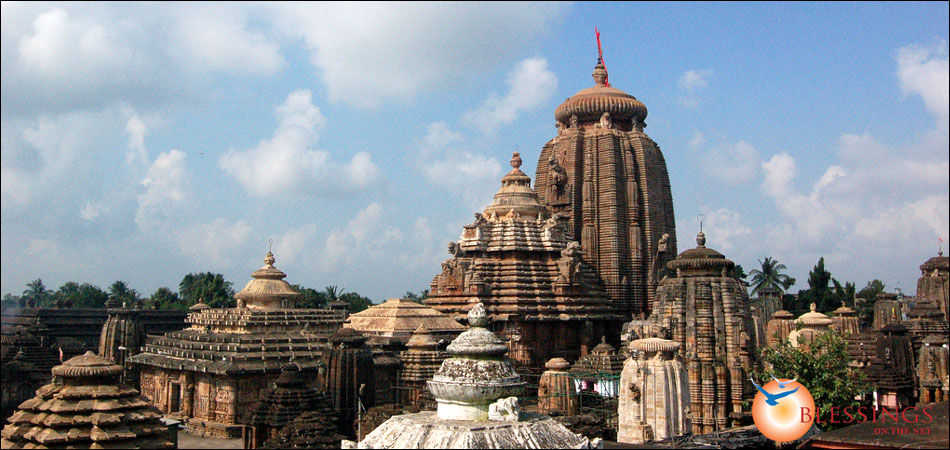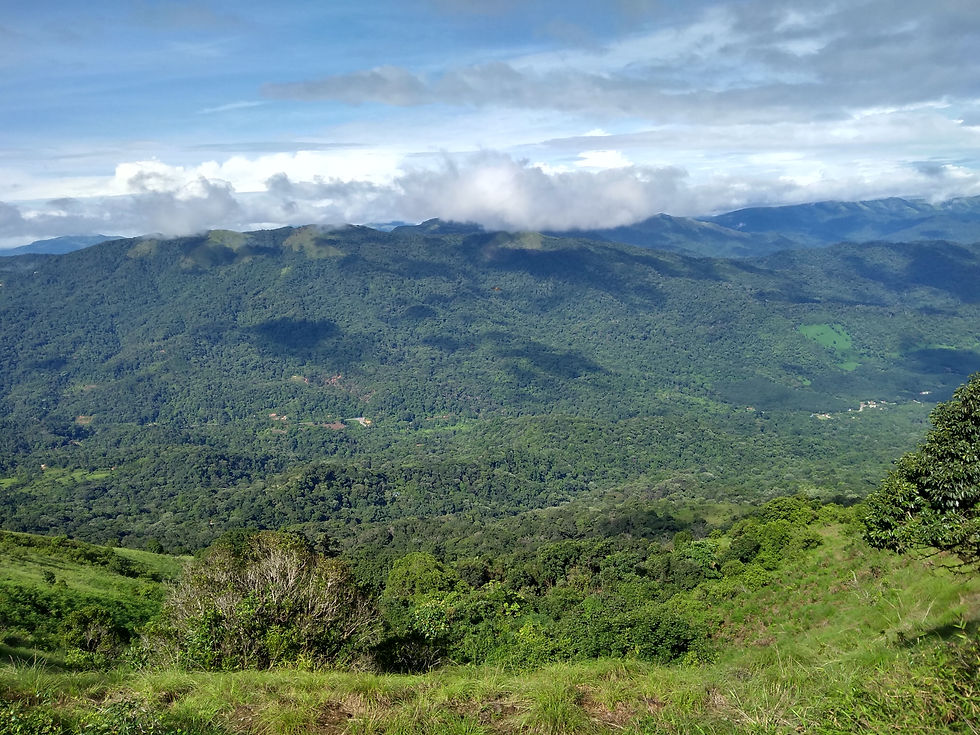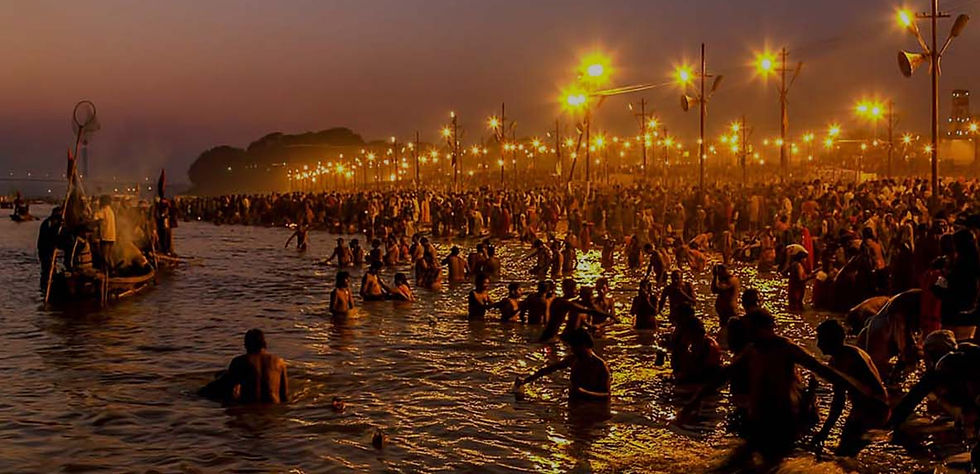The Unsung City Of India Bhubaneswar.!
- ESTEEMIT'S Tour's
- Mar 24, 2020
- 6 min read
Bhubaneswar is an ancient city in India’s eastern state of Odisha, formerly Orissa. Many temples built from sandstone are dotted around Bindu Sagar Lake in the old city, including the 11th-century Hindu Lingaraja Temple. Outside Rajarani Temple are sculpted figures of the guardians of the 8 cardinal and ordinal directions. Jain antiques, weaponry and indigenous pattachitra paintings fill the Odisha State Museum.

Here are the top tourist attractions to see in Bhubaneswar:
1) Lingaraj Temple:
Lingaraj Temple, built in 11th century, is dedicated to Lord Shiva and is considered as the largest temple of the city. Built by king Jajati Keshari of Soma Vansh, the main tower of this temple measures 180-feet in height. It is built in red stone and is a classic example of Kalinga style of architecture. The temple is divided into four sections―Garbh Griha (sanctum sanctorum), Yajna Shala (the hall of yajnas), Bhoga Mandap (the hall of offering) and the Natya Shala (hall of dance), and the spacious courtyard of the magnificent shrine comprises 50 small temples that are dedicated to several Gods of the Hindu pantheon. In the sanctum sanctorum, the linga of Lord Shiva is regarded as 'Swayambhu' (self-originated) and worshipped as both Lord Shiva and Lord Vishnu. It is said that when construction of Lingaraj Temple was about to be completed, Jagannath culture started growing in Odisha. Hence, the presiding deity here is known as Hari-Hara; Hari denotes Lord Vishnu and Hara meaning Lord Shiva. The Shivalinga in the sanctum of the temple rises to a height of 8 inches above the floor level, and is 8 feet in diameter. Although thousands of devotees visit the Lingaraj every day, the temple comes alive on the occasions of Shivaratri and Rukuna Rath Yatra. This temple is only accessible to Hindus. Located to the north of the temple is Bindusagar Lake, one of the popular picnic spots in the city. About 1300 ft long and 700 ft wide, this lake turns into a visual delight when thousands of people set sail tiny boats on the occasion of Boita Bandana that commemorates Odisha’s rich maritime history. On the western banks of the lake, lies the beautiful garden of Ekamravan (literally meaning one-mango-tree forest). Ekamravan finds mention in ancient Hindu mythological texts as an entire forest that comprised a single mango tree. It was a key element in the abode of Lord Shiva and his divine consort, Goddess Parvati. A variety of plants traditionally associated with Hindu gods and goddess and having spiritual and medicinal significance can be found in Ekamravan
BEST TIME TO VISIT IN TEMPLE:
Visiting the temple between January and March is worth it, which will help you witness the divinity of the Shivaratri celebration at the temple.
2) RAJARANI TEMPLE:

A popular 11th-century Hindu temple that can be found in Bhubaneswar, the capital of Odisha, in India; the Raja Rani Temple is locally known as the 'love temple' because it contains some sensuous carvings of women and couples. No images can be found inside the sanctum, and hence the temple is not associated with any particular sect of Hinduism. This is perhaps exactly where the charm of the temple comes from: the temple belongs to no specific sect and is open to all people irrespective of the deity that they worship and admire. However, the figures of Lord Shiva and Goddess Parvati carved on the walls strongly indicate that the temple has certain associations with Shaivism.
According to historians, it was constructed at some time between the 11th and 12th century, but the exact period has not yet been ascertained. In fact, it is from the Rajarani Temple that the architecture of other temples in central India is believed to have been developed; the most notable examples being the Khajuraho temples and the Totesvara Mahadeo temple in Kadawa. The Rajarani Temple is currently under the care of the Archaeological Survey of India and is maintained as a ticketed monument, that is tourists need to purchase a ticket to enter the temple. The Raja Rani Temple has an altogether different charm to offer, and this is perhaps what sets it aside and apart from the other temples that one can find scattered all across Bhubaneswar, which is now rightly known as the temple metropolis of Orissa.
3) HIRAKUD DAM
Any nature lover will enjoy the quaint atmosphere and lush greenery that is in abundance at the Hirakud Dam. The dam stretches between the Burla and Hirakud Hills. In addition to showcasing stunning natural beauty, the dam irrigates 7,500,000 hectares of land and also generates hydroelectricity. Situated near the Hirakud Dam is a hill called Budharaja hill, which is well-known for the Budharaja Temple at its peak. Dedicated to Lord Shiva, this temple offers breathtaking views of the dam from. Another temple which is a must-visit in Hirakud is the Ghanteshwari Temple which served as a lighthouse for the incoming ships as the bells were used to warn the sailors. Visit this destination for a tranquil getaway in the lap of nature.
Constructed across the Mahanadi River in Sambalpur, Odisha the Hirakud Dam is hailed as the longest human-made dams in India. Astonishingly, it is over 56km long and is the top pick among the locals as well as tourists to enjoy a refreshing day out. This marvellous piece of architecture construction was built in the year 1956, and owing to its location is a fantastic spot to watch nature come alive in all its glory. One of the major attractions here is a drive-through road that you can take you 21km over the dam, admiring its ingeniousness and expertise. Another striking feature of the dam is, of course, the wide expanse of the view that it offers from the Gandhi and Nehru Minarets that are located towards the Northern Facade of the dam. It is also a fantastic site for birdwatching as it is surrounded by abundant water and trees on all sides.
4) Parasurameswara Temple
Constructed in 650 A.D. this temple is a unique specimen of Oriyan style of architecture. The most special feature of this temple is the presence of one thousand lingas in the north-west corner of the complex.
Besides this, it is adorned with beautiful carvings of Lord Ganesha, Lord Shiva and Goddess Parvati. The artistic splendor with which the detailing of the sculptures and carvings are done reflects the glory of the era gone by.
5) Brahmeshwara Temple
The Brahmeshwara Temple is yet another relic of the brilliance of Oriyan style of architecture. Built in the 11th century, this temple is surrounded by four smaller shrines. The main shrine in this temple is that of a Shivalingam and there are also sculptures of Lord Shiva and Goddess Parvati alongside. Famous for its beautiful carvings, it attracts a lot of pilgrims throughout the year.
6) Tikarpada Wildlife Sanctuary
The Tikarpada Wildlife Sanctuary spreads across 795.52 square kilometers and does not fail to enthrall its visitors with its overwhelming beauty, lush green surrounding, the ever cherished rambling of River Mahanadi besides the very famous Satkosia gorge and large variety of species of wild animals, birds and plants.
Tikarpada Wildlife Sanctuary is a habitat of tigers, leopards, gaurs, simbal, spotted deers, four horned antelopes, sloths, gharial and many others. The Gharial Sanctuary undertakes the process of breeding of the Gharial to increase their numbers and give them the right atmosphere and treatment. While you are here, you get a chance to caress the untainted form of nature, the luxuriant greenery leaves your soul enchanted and the existence of the wild animals around leaves your soul enthralled. Sometimes thunderous and sometimes calm river Mahanadi renders the opportunity for fish angling, or to motor-boat or river rafting across it. You can choose to trek or camp in the sanctuary as well. This a perfect destination for the lovers of nature, wildlife and adventure.
7) Khandagiri Caves
Also known as Cuttack caves, Khandagiri Caves are artificial caves located in the state of Orissa which date back to 2nd century. This place is quite a sight to see with all the beautifully carved inscriptions and figures. This place holds a great historical significance. A large number of ancient temples with intricate carvings surround this place which have their own significance. If you want to relax and spend some quiet time amidst nature, a number of lush green parks are also located around Khandagiri Caves.
Etymology
It is believed that the Khandagiri caves were dug during the rule of the great emperor of the Mahameghavahana Dynasty, King Kharavela. These caves are believed to be built by Jain and Buddhist monks who used these caves as a place to pray and meditate.
Flora and Fauna
Apart from temples and historical sites, this place is also replete with flora and fauna. Animals such as elephants, wild boars, hyena, panther, jackal, fox and bears can be seen. This place is also home to colourful birds including peacocks, Indian Cuckoo, Kingfisher and Indian tree pie. Snakes and lizards are also common inhabitants of this place.






Comments